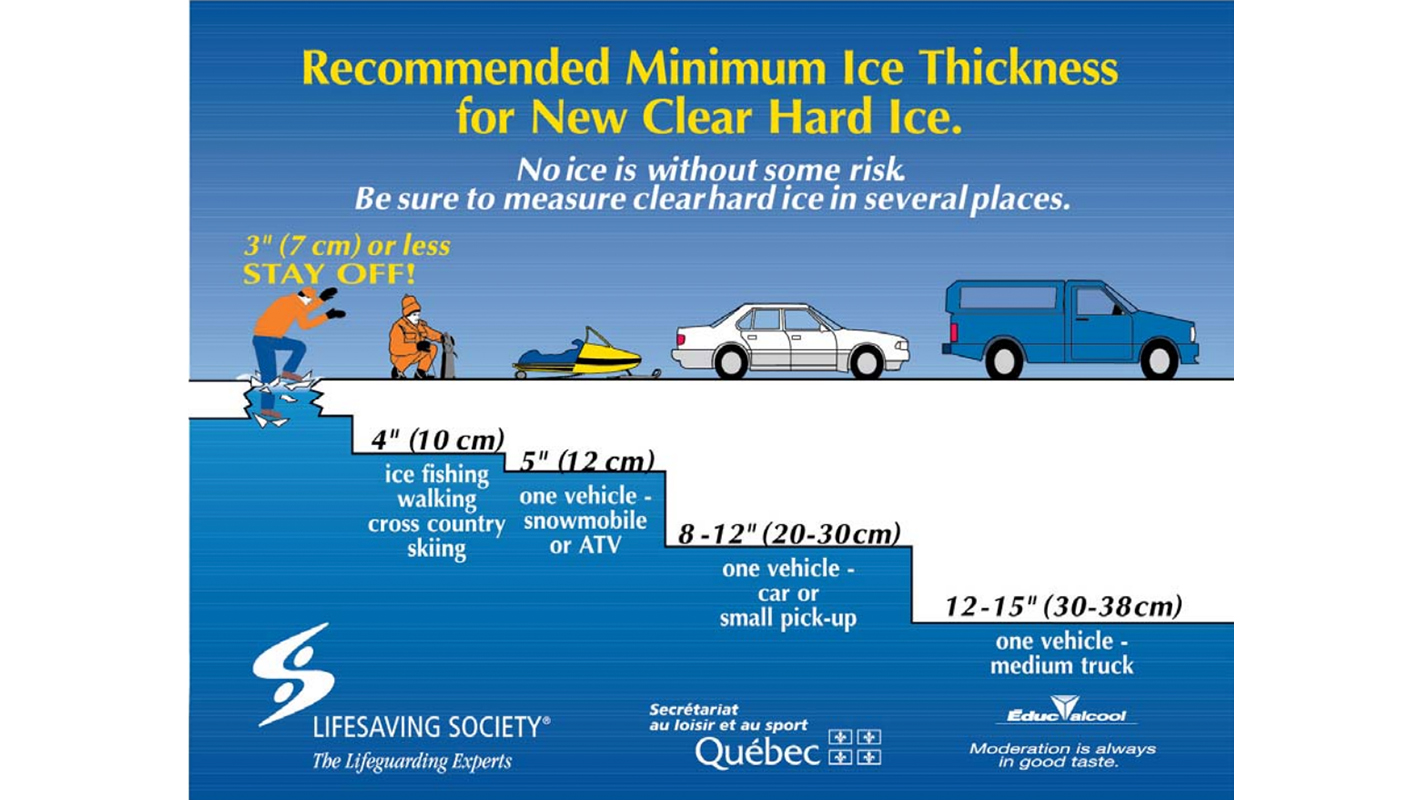By Geoff Agombar
Local Journalism Initiative
Each year, a significant proportion of drownings occur during the colder months. Many of those occur on ice during recreational activities, such as snowmobiling, ice hockey, fishing or walking. According to a Lifesaving Society Quebec 2020 Drowning Report, 27 per cent of drownings in 2013-17 occurred between October and April.
Last February, some warnings were issued about a spike in ice accidents in some areas as temperatures plummeted after an unusually warm early winter. In January 2021 in Montreal, cases reportedly jumped to 24 versus 10 in January 2020, for example.
Reporting at that time blamed deceptively thin ice after a late freeze. Perhaps increased outdoor activities to escape social isolation cabin fever during a pandemic winter had a marginal effect, too.
With another unusually warm winter solstice behind us and spiking coronavirus cases before us, a similar constellation of circumstances could be repeating. A good time to recall general ice safety advice before the mercury inevitably plummets and the freeze sets in.
Lifesaving Society Quebec advises three considerations about the colour of ice to determine if a frozen water body is safe for your activity.
Transparent, dark ice is strongest. Opaque, white ice contains air bubbles, and its strength will depend on its density. White ice that contains minimal air may turn out to be nearly as strong as dark ice. Grey ice, however, often contains water due to a thaw, and should be considered dangerous.
Environment and Weather
The size and depth of a water body will have an effect on ice formation. The deeper a lake is, the longer it will take to freeze. Ice near the shore will both freeze and thaw faster than ice farther from shore.
River ice is less solid than lake ice due to the action of currents. Currents will thin the underside of ice, so the thickness of river ice may be less consistent or predictable.
Obstacles, such as rocks or docks, absorb the sun’s rays. Freezing will be delayed and melting accelerates close to such objects.
Ice will be strongest when the temperature stays consistently below 0-degrees Celsius. When temperature fluctuates around the freezing point, the ice will be less solid. Melting and refreezing the ice surface creates layered ice, and layered ice has more cracks and vulnerabilities. Water on the surface of the ice due to melting or precipitation similarly weakens the ice.
Sun on the ice can decrease its strength too. The ice may be stronger in the morning than after a day of sunshine. Agitation by wind can also delay freezing, or wind can pile up accumulations of snow. Snow can act as an insulating blanket that allows the temperature of the ice to rise. If the snow is more than half the thickness of the ice, it can be dangerous.
Thickness
Lifesaving Society Quebec warns that no type ice is 100 per cent safe. Its thickness must be considered. Measure it by drilling a hole down to the water in several places.
Less than 7 cm or 3 inches, do not go out on the ice. Over 10 cm or 4 inches is advised for activities like walking, skating, skiing, or ice fishing. For all-terrain vehicles and snowmobiles, more than 12 cm or 5 inches is desirable.






